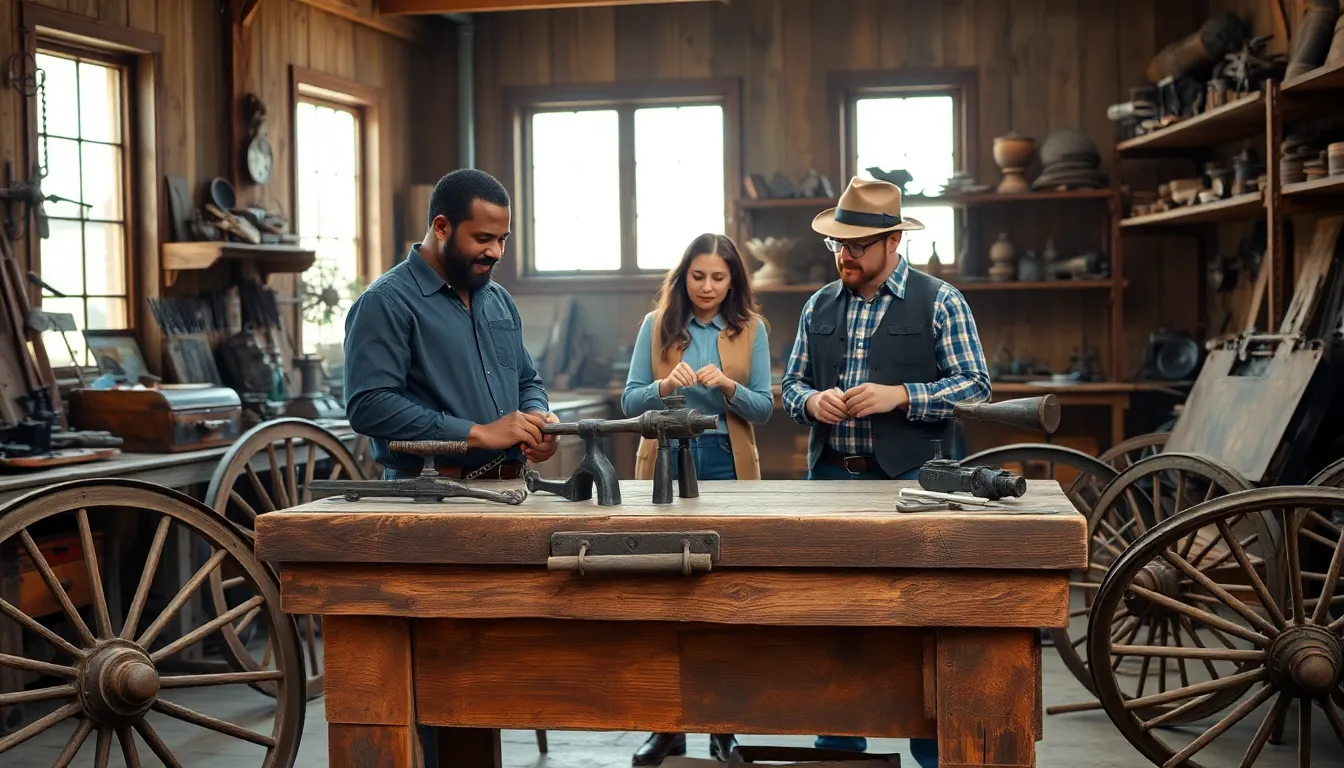Picture this: dusty trails, rugged landscapes, and the clink of spurs from a lone rider. Welcome to the Wild West, a time when hardware shaped lives, built communities, and became symbols of adventure. If you thought hardware was just about hammers and nails, think again. The Wild West era was a treasure trove of innovation and grit, marked by unique tools and structures that still inspire today. Buckle up as we jump into this intriguing realm, exploring its legacy, key hardware pieces, and how they paved the way for modern design. Get ready, this isn’t just about the wild: it’s about the hardware that tamed it.
Table of Contents
ToggleThe Legacy of the Wild West Era

The Wild West era, spanning from the late 1800s to the early 1900s, is often romanticized in movies and literature. This time was defined not just by outlaws and cowboys, but also by ingenuity and progress. Hardware during this period played a crucial role in shaping everyday lives. From the sturdy wagon wheels that transported goods across vast plains to the hand tools that helped build towns, each piece of hardware tells a story of resilience and creativity. Notably, the legacy of this era has influenced contemporary design, making Wild West hardware not merely artifacts but inspirations for modern craftsmen.
The tools of the trade back then were a far cry from what we see today. Craftsmen had to rely on their skills and the limited resources available to them. Each item crafted was imbued with the spirit of the frontier and a testament to human determination. As we investigate deeper, we can appreciate how this legacy continues to resonate in today’s era.
Key Hardware Used in the Wild West
When one thinks about the hardware of the Wild West, several key items come to mind.
1. Wagons and Wheels
Wagons were the backbone of transportation and trade in the West. Heavy-duty wooden wheels were designed to endure rough terrain, making them indispensable for pioneers traveling westward. Without these rugged wheels, many settlements might not have flourished.
2. Blacksmith Tools
The blacksmith was a cornerstone of any frontier town. Essential tools included anvils, hammers, and tongs, allowing blacksmiths to create everything from horseshoes to weaponry. Their craftsmanship was integral to daily life, serving both practical and emergency needs.
3. Guns and Firearms
While not hardware in the conventional sense, the manufacturing and repairs of guns were critical in the Wild West, providing safety and security. Skilled gunsmiths played a vital role, ensuring that settlers could defend themselves against threats.
4. Farming Tools
As settlers established homesteads, farming tools like plows and sickles became necessary. These tools represented the shift toward agriculture in previously uninhabited areas, enabling communities to sustain themselves and flourish.
Each of these hardware pieces tells a story, highlighting the resourcefulness of those who lived during this tumultuous time.
Famous Hardware Locations of the Wild West
Traveling through the Wild West, certain locations stand out as hubs of innovation and craftsmanship.
1. Tombstone, Arizona
Known for its rich mining history, Tombstone was also famous for its blacksmith shops, where skilled hands crafted essential tools and weapons. The narrative of the gunfight at the O.K. Corral further elevates the significance of hardware in this iconic town.
2. Deadwood, South Dakota
This gold rush town was alive with activity, and its blacksmiths served everyone from miners to saloon owners. The hardware produced here was crucial in sustaining a bustling economy.
3. Dodge City, Kansas
Dodge City earned its reputation for lawlessness, but it was also a site of hardware innovation. Early settlers relied heavily on hardware stores that provided everything from farming tools to household necessities.
The Role of Hardware in Daily Life
In the Wild West, hardware was not just functional: it formed the backbone of daily life.
From the average homesteader to the gold miner, everyone depended on hardware. It dictated productivity and, at times, survival. For instance, without a reliable plow, crops would fail, leading to famine. Also, the construction of homes relied heavily on sturdy materials like nails, hinges, and wooden beams, all crafted with precision.
Hardware also became a symbol of status and self-sufficiency. A well-constructed wagon or a finely crafted blade elevated one’s standing in the community. Stories from this era often include references to the social implications of quality hardware: a well-maintained gun could mean the difference between life and death, while reliable tools ensured a flourishing farm. So, hardware was intertwined with the very fabric of everyday life.
Impact of Wild West Hardware on Modern Design
The legacy of Wild West hardware extends far beyond its original context, influencing modern design in significant ways.
1. Rustic Aesthetics
Many contemporary designers draw inspiration from the rugged charm of the Wild West. Elements like aged wood, metal accents, and vintage tools often appear in modern interiors, creating a warm, inviting atmosphere.
2. Sustainability
The resourcefulness of past craftsmen is making a resurgence in today’s design philosophy. Many modern craftsmen emphasize the value of repurposing materials, much like the settlers of the Wild West had no choice but to adapt what was available. This drive toward sustainable design links our current practices to those of the past, proving that good design is timeless.
3. Functional Simplicity
Today’s design trends favor simplicity and functionality, reflecting the practical needs that originally drove the creation of Wild West hardware. This blend of utility and aesthetics echoes the ethos of frontier life.




